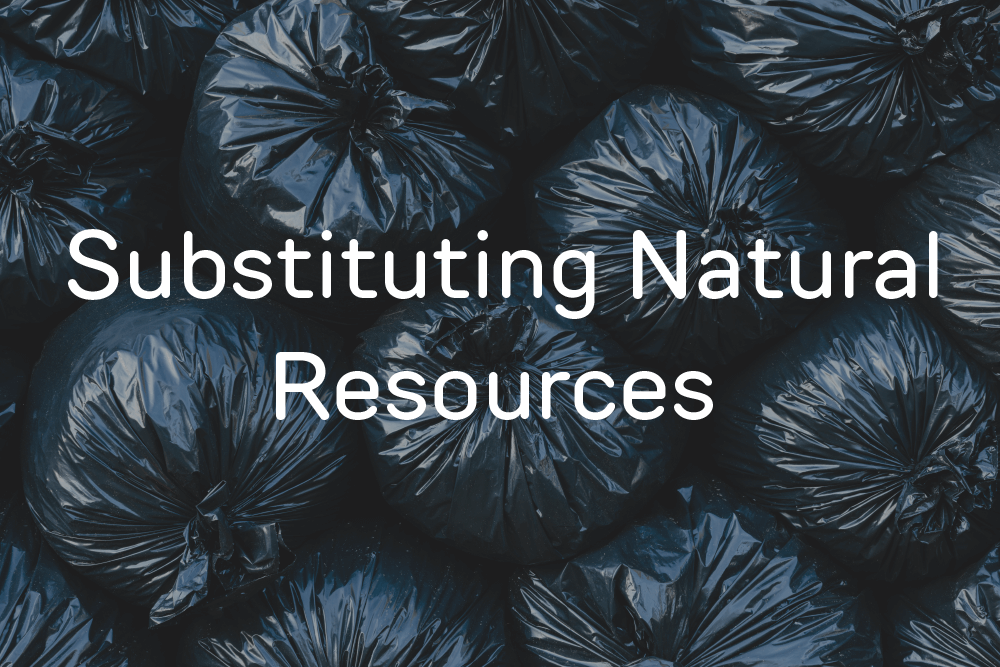Did you know plastics were first invented as a substitute for natural ivory? In the late 1800s, a New York firm offered $10,000 to whoever could provide a substitute for the ivory it used in its billiard balls. John Wesley Hyatt discovered such a material by treating cotton-derived cellulose with camphor. The pliable and easily shaped (plastic) result imitated many materials, including horn, linen, and ivory. Advertisements at the time praised Hyatt’s “plastic” as a material that would protect the natural world from destructive human forces. By the early 1900s, the first wholly synthetic plastic, Bakelite, was manufactured, and the rest is history.
Plastics have forever changed the way we live. Since the Second World War, they’ve been used in everything from automobiles to packaging and household goods. Their benefits cannot be denied, but, sadly, neither can their environmental impact. Once considered a sustainable solution to the harvesting of ivory, plastics are now considered a major driver in the planet’s pollution and landfill challenges. Plastic manufacture has its difficulties too, as the cost of producing them depends heavily on the price of fossil fuels and other market conditions.
Energy and Plastic Resins
Fossil fuels—particularly natural gas and oil resources—make up the raw materials for plastic resins. Indeed, a greater number of plastic resins are now made using bio-based materials from algae and plants. But fossil fuels continue to make up the majority of their feedstocks. Energy resources account for up to 70 percent of the total costs for plastic resin producers. That makes energy prices critical to plastic resin competitiveness.
Today, plastic producers are feeling the effects of a resin price increase. Plastic raw material prices are soaring, with PVC resin prices rapidly increasing due to a decrease in availability. Some businesses continue to procure supply chain materials at any price to maintain continuity of supply. But as the market wildly seesaws—it’s currently said to be on the mend—it’s clear alternative plastic materials are a way for manufacturers to hedge against future price fluctuations.
Resin Prices Rising – Time for Plastic Alternatives
Along with constrained supplies, higher feedstock costs, and continued strong demand, other factors are fueling resin’s ongoing price increases, including a finite amount of available processing capacity.
There are several ways manufacturers historically economize on resin costs:
- Negotiating smarter resin contracts.
- Stockpiling resins when prices are lower.
- Using engineered purging agents that require less resin.
Another option? Investment in alternative sustainable materials. UBQ™ material is a climate-positive thermoplastic that works seamlessly with standard manufacturing machinery. And because it doesn’t use oil or other fossil fuels in its production, its price point is stable and unaffected by market volatility. Compatible technologies include:
- Extrusion
- 3D printing
- Injection molding
- Compression molding
UBQ™ is compatible as a raw material in a wide range of industrial applications and is a sustainable substitute for oil-based plastic. It has been successfully integrated into the production of products like automotive parts, household goods, planters, municipal recycling bins, logistic solutions, and more.
Looking Ahead
The Paris-based International Energy Agency (IEA) expects plastics production to reach over 1 billion metric tons by 2050, a more than 25 percent increase from current levels. Despite increased scrutiny over its effect on people and the planet, plastics are critical to modern life and will continue to be so for the foreseeable future. They’re prized for their life-saving advances in modern medicine and are crucial in producing computers and mobile devices.
Replacing natural materials with plastics has made many goods lighter, safer, stronger, and less expensive. As a result, plastics are responsible for raising the standard of living for many people, giving them access to materials and goods that were once available only to the wealthiest nations. The challenge, then, is to make plastics more sustainable by creating and using substances and materials that are more environmentally friendly than conventional plastics. UBQ embraces a true circular economy’s tenets, converting organic household waste into a novel biobased material that can be repeatedly recycled and reused. From packaging to piping and lumber, thermoplastics like UBQ™ material offer manufacturers a viable, sustainable, and financially stable alternative to unstable links in their supply chain such as resin.


